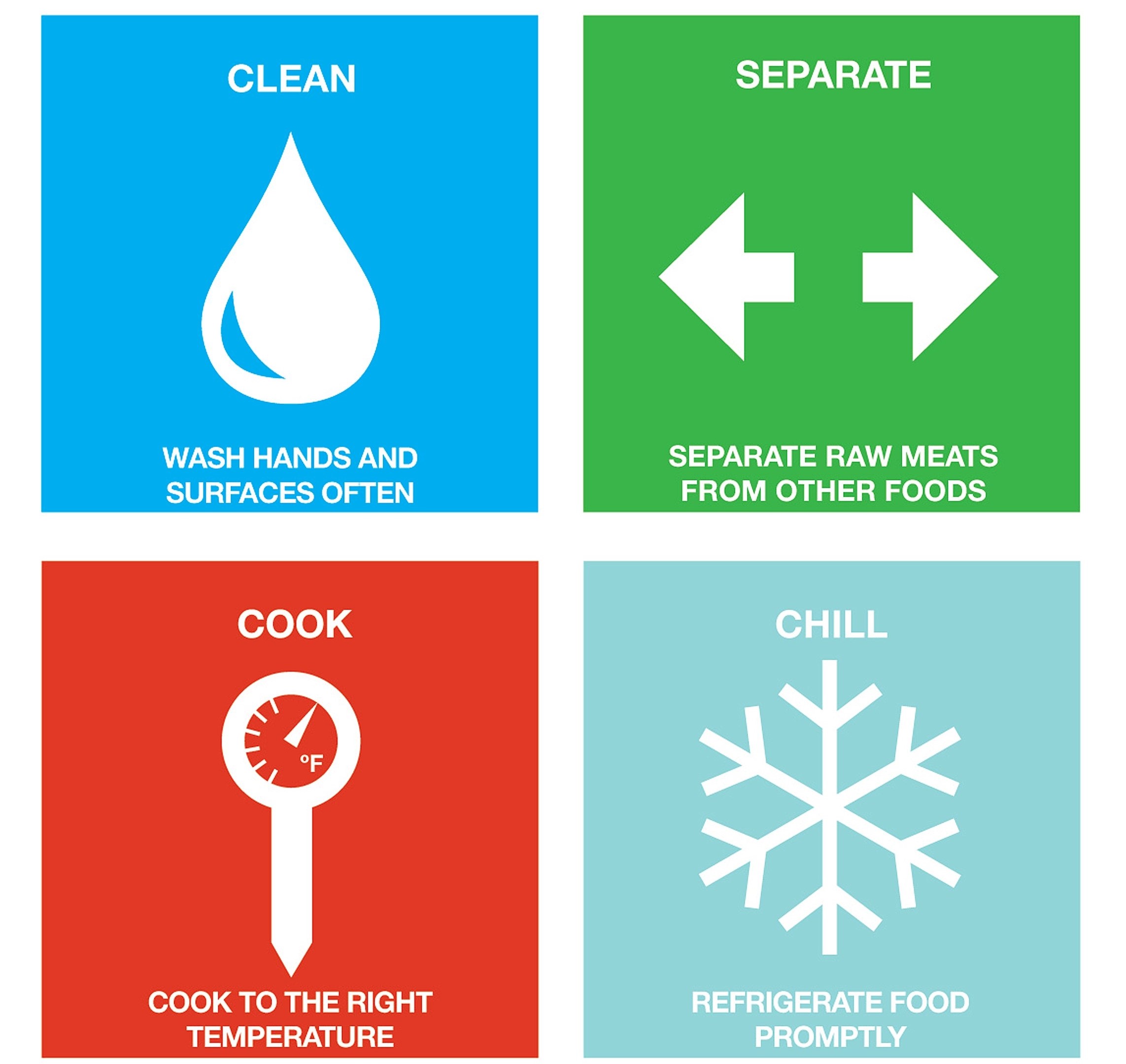
Four Steps to Food Safety
Following four simple
steps at home Clean, Separate, Cook, and Chill can help protect you and your
loved ones from food poisoning.
Clean: Wash your hands
and surfaces often.
·
Germs that cause food poisoning
can survive in many places and spread around your kitchen.
·
Wash hands for 20 seconds with soap and water before,
during, and after preparing food and before eating.
·
Wash your utensils,
cutting boards, and countertops with hot, soapy water after preparing each food
item.
·
Rinse fresh fruits and
vegetables under running
water.
Separate: Don’t
cross-contaminate.
·
Raw meat,
poultry, seafood, and eggs can spread germs to ready-to-eat foods—unless you keep them
separate.
o Use separate cutting boards and plates for raw
meat, poultry, and seafood.
o When grocery shopping, keep raw meat, poultry,
seafood, and their juices away from other foods.
o Keep raw meat, poultry, seafood, and eggs
separate from all other foods in the refrigerator.
Cook to the right
temperature.
·
Food is safely cooked
when the internal temperature gets high enough to kill germs that can make you
sick. The only way to tell if food is safely cooked is to use a food
thermometer. You can’t tell if food is safely cooked by checking its color and
texture (except for seafood).
·
Use a food thermometer
to ensure foods are cooked to a safe internal temperature. Check this chart for a
detailed list of temperatures and foods, including shellfish and precooked hamexternal
icon.
o Whole cuts of beef, veal, lamb, and pork,
including fresh ham (raw): 145°F (then allow the meat to rest for 3 minutes
before carving or eating)
o Fish with fins: 145°F or cook until flesh is
opaque
o Ground meats, such as beef and pork: 160°F
o All poultry, including ground chicken and
turkey: 165°F
o Leftovers and casseroles: 165°F
o Microwave food thoroughly:
§ Know your microwave’s wattage. Check inside the
door, owner’s manual, or manufacturer’s website. Lower wattage external icon means longer cooking time.
§ Follow recommended cooking and standing times,
to allow for additional cooking after microwaving stops. Letting food sit for a
few minutes after microwaving allows cold spots to absorb heat from hotter
areas and cook more completely.
§ When reheating, use a food thermometer to make
sure that microwaved food reaches 165°F.
Chill: Refrigerate
promptly.
Bacteria can multiply
rapidly if left at room temperature or in the “Danger Zone” between 40°F and
140°F.
·
Keep your refrigerator
at 40°F or below, your freezer at 0˚F or below, and know when to throw food out external icon.
·
Divide warm foods into
several clean, shallow containers so they will chill faster.
·
Refrigerate perishable
food within 2 hours. If the food is exposed to temperatures above 90°F (like a
hot car or picnic), refrigerate it within 1 hour.
·
Thaw frozen food safely
in the refrigerator, in cold
water external icon, or in the microwave. Never thaw foods on the counter because
bacteria multiply quickly in the parts of the food that reach room temperature.











